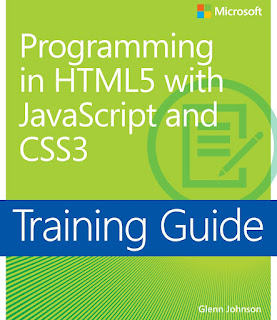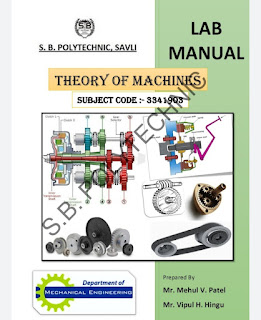Shareware
Shareware is software that is available free of cost but only up to a certain time limit. Furthermore, after the time limit, the user has to pay the money to use the full-featured version of the software. Since, after the time limit, the software deactivates itself. Its main advantage is that users can understand and know about the software before buying it.
Besides, the user can share the software free of cost during the trial period. Therefore, we can say that these are demo or trial versions of the original software. Hence, the name is also demoware or trial software. The idea of using the software is ‘try before you buy’. These are usually famous for gaming software since the developers provide them to so that users can try any new game. Therefore, it helps to gain popularity for their software. Examples are WinZip, Adobe Acrobat 8 Professional, GetRight, etc.
Types of Shareware
There are several types of shareware software. They are as follows:
1. Adware
Adware stands for “advertising-supported software”. This software basically displays advertisements to earn revenue for the developer. Moreover, we can say that they usually display unwanted advertisements. These appear either during the installation process or while using the software interface.
Besides, this software also shares some information from your system with the vendor. So that they can display ads according to the user’s interest. Therefore, in a way, they act as malicious software.
Examples are Adblock Plus, Skype, Fireball, Appearch, DeskAd, Gator, etc.
2. Demoware
It is a trial version of the software that provides a demo or trial of the software. It further divides into two categories. They are as follows:
a) Crippleware
This software provides only a certain number of features until the user does not purchase the full version of the software. Furthermore, there is a time limit until which the user can use the software but only with limited features. Besides, it may block certain features like saving or printing the files. Also, it may provide some unwanted features like watermarks on the pictures and videos.
b) Trialware
In this software, the user can use all the features of the software within the time limit. Hence, it provides full usage and the right to know the software fully. After the trial period gets over the user can either use only certain features (crippleware) or the whole software deactivates. If the user further wants to use the software he should buy the license to unlock the software.
3. Donationware
It is the type of software that provides the full-featured version to the user and requests the user to pay an optional amount. Furthermore, this means that the payment is just optional. Moreover, this payment is usually for a non-profit organization or it can be for the developer to support the future of the software. The amount of payment may be denoted by the developer himself or it can be as per the user’s choice. Hence, this software is usually for earning revenue for a non-profit cause.
4. Nagware
This software continuously reminds the user to pay for the software. They continuously display alert messages or dialogue boxes either on starting the software or while using the application. Besides some software also applies watermarks on files clearly stating that the files are of an unlicensed copy of the software.
Moreover, there may be some messages which will disappear only when the user pays the amount. Therefore, these messages continuously annoy users. Hence, their name is also begware, annoyware, or begscreen. Examples are WinZip, WinRAR, Spotify, etc.
5. Freemium
This software provides the full-featured version of the software. But, at the same time, the user has to pay an amount for the premium version. The premium version of the software contains some advanced features of the software. Therefore, all the basic features are free of cost but the special features are provided only after purchasing the license. For example CCleaner. These are also called as ‘lite’ version of the software.
Advantages of Shareware
Advantages of shareware are as follows:
- It is initially free for the customers.
- The user can fully understand the capabilities and flaws of the software.
- One will not have to pay money for software he doesn’t like.
- A lot of overhead expenses of printing and packaging of software are saved for the author.
Disadvantages/Threats of Shareware
There are many threats to using shareware. They are as follows:
- Malware: Hackers can fool users using adware and make them download malicious software.
- Security Vulnerabilities: The shareware is usually more at risk. Since there is no license in the beginning and there are no updates therefore if the software is left unused on the system it may pose risk to the system.
- Sponsored Software: Some shareware may download a secondary program which can cause a threat to the system.
- Data Leaks: Some software is such which can send the data of the system to the author which can be a great threat.
- No access after the trial period.
Freeware
Users can use this software without any cost. Furthermore, it does not mean that the source code is also available along with the software. No such right to read or modify the source code is given. Moreover, users cannot distribute this software. We can say that these are closed source software.
Advantages of freeware are as follows:
- Available to users free of cost.
- Distribution is free of cost.
Examples are Adobe PDF, Yahoo Messenger, Google Talk, MSN messenger, etc.
Difference between Freeware and Shareware
| Freeware | Shareware |
| Software is free of cost. | Free of cost but only for a certain time duration. |
| It is usually fully functional and all the features are available. | Only certain features are available for the trial period. |
| Distribution is free of cost. | Free distribution may require the author’s permission. |
| There is no time limit for usage. | There is a certain trial period usually 30 days. |
| Examples are MSN Messenger, Adobe PDF, Yahoo Messenger, etc. | Examples are WinZip, Getright, etc. |
Frequently Asked Questions (FAQs)
Q1. What is shareware?
A1. Shareware is software that is available free of cost but only up to a certain time limit. Furthermore, after the time limit, the user has to pay the money to use the full-featured version of the software.
Q2. What is the other name for shareware?
A2. Its name is also demoware or trial software.
Q3. What are the types of shareware?
A3. Types of shareware are as follows:
- Adware
- Demoware: Crippleware and Trialware
- Donationware
- Nagware
- Freemium
Q4. Give examples of shareware.
A4. Examples of shareware are as follows:
- WinZip
- Adobe Acrobat 8 Professional
- GetRight
- Adblock Plus
- Skype
- Fireball
- Appearch
Q5. What is the advantage of shareware?
A5. Its main advantage is that users can understand and know about the software before buying it.
Read More
- What is Microprocessor and Types of Microprocessor
- Basics of Computer and its Operation
- Functional Components of a computer and their Interconnections
- What is Booting and Types of Booting in Computer
- What is Operating System and Functions of Operating System
- Interpreters and Types of Interpreters
- What is Compiler and Types of Compiler
- What is Assembler and What is Assembly Language
- What is Utility Software and Types of Utility Software
- Office Tools and Functions of Office Tools
- What are Domain Specific Tools and Examples of Domain Specific Tools
- ASCII Definition, Use, Types, Unicode
- UNICODE Definition, Types, Uses, Advantages, Importance
- What is Memory in Computer Science Parts of Memory
- ISCII Definition, Languages supported in ISCII, Advantages, Disadvantages
- What are Computer Ports Characteristics of Ports and Types of Ports
- What is PS/2 Port, Characteristics of a PS/2 port, PS/2 Port Pins
- FireWire Port, Characteristics of FireWire Port, Versions of FireWire
- Parallel Port, Characteristics of Parallel Port, USB Port
- Difference Between Infrared and Bluetooth Port
- What is RAM, Types of RAM, Difference between types of RAM
- What is ROM, Features of ROM, Types of ROM
- What is Cache Memory, Levels of Cache Memory, Types of Cache Memory
- What is Clock Speed, Effect of Clock Speed on the Performance of Microprocessor
- What is Open Source Software, Examples and Advantages
- What is Shareware, Types of Shareware, Advantages and Disadvantages of Shareware
- What is Freeware, Examples, Advantages and Disadvantages
- What is Proprietary Software, Examples, Advantages and Disadvantages
- What is Secondary Memory, Characteristics and Types of Secondary Memory


